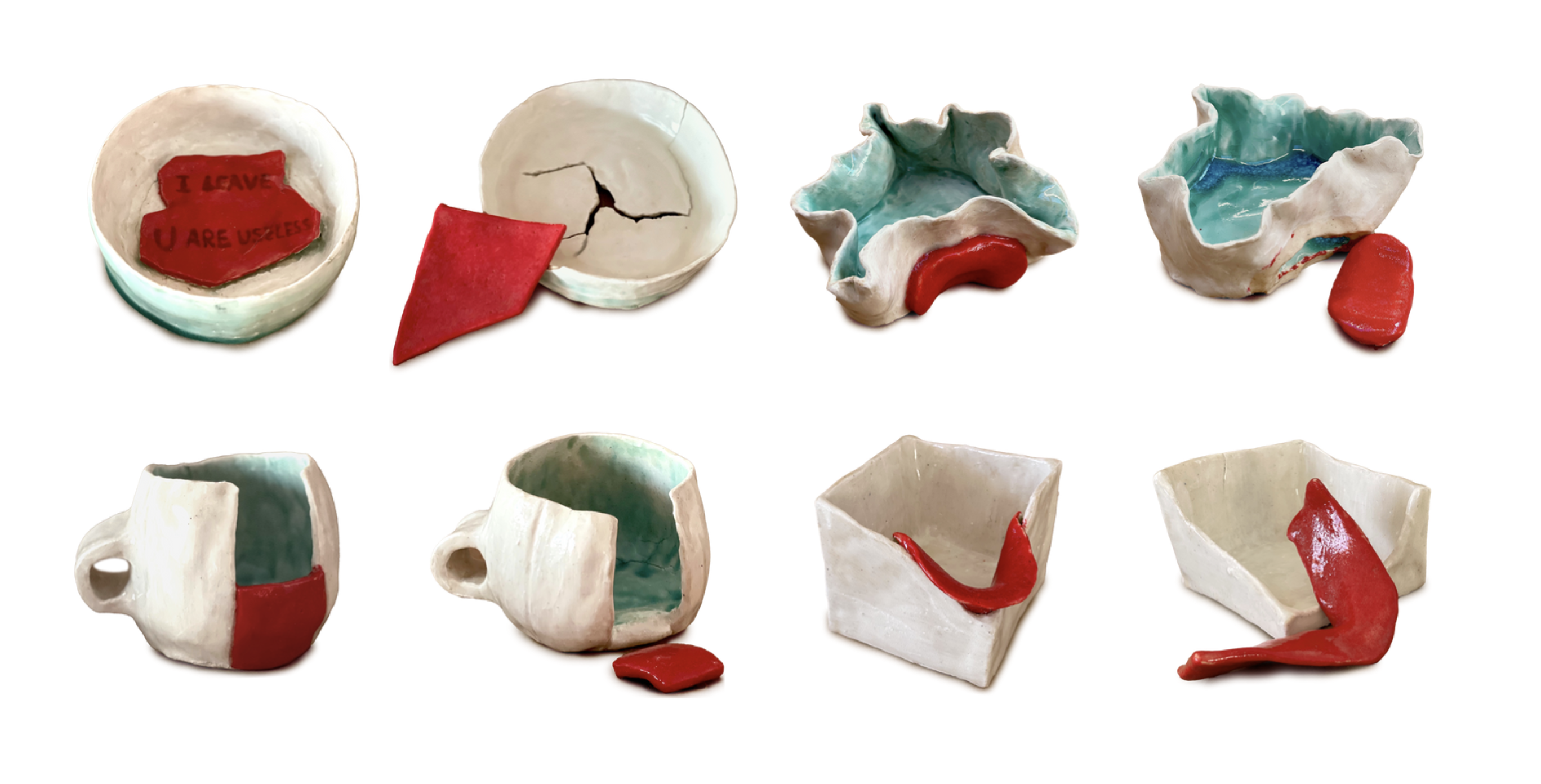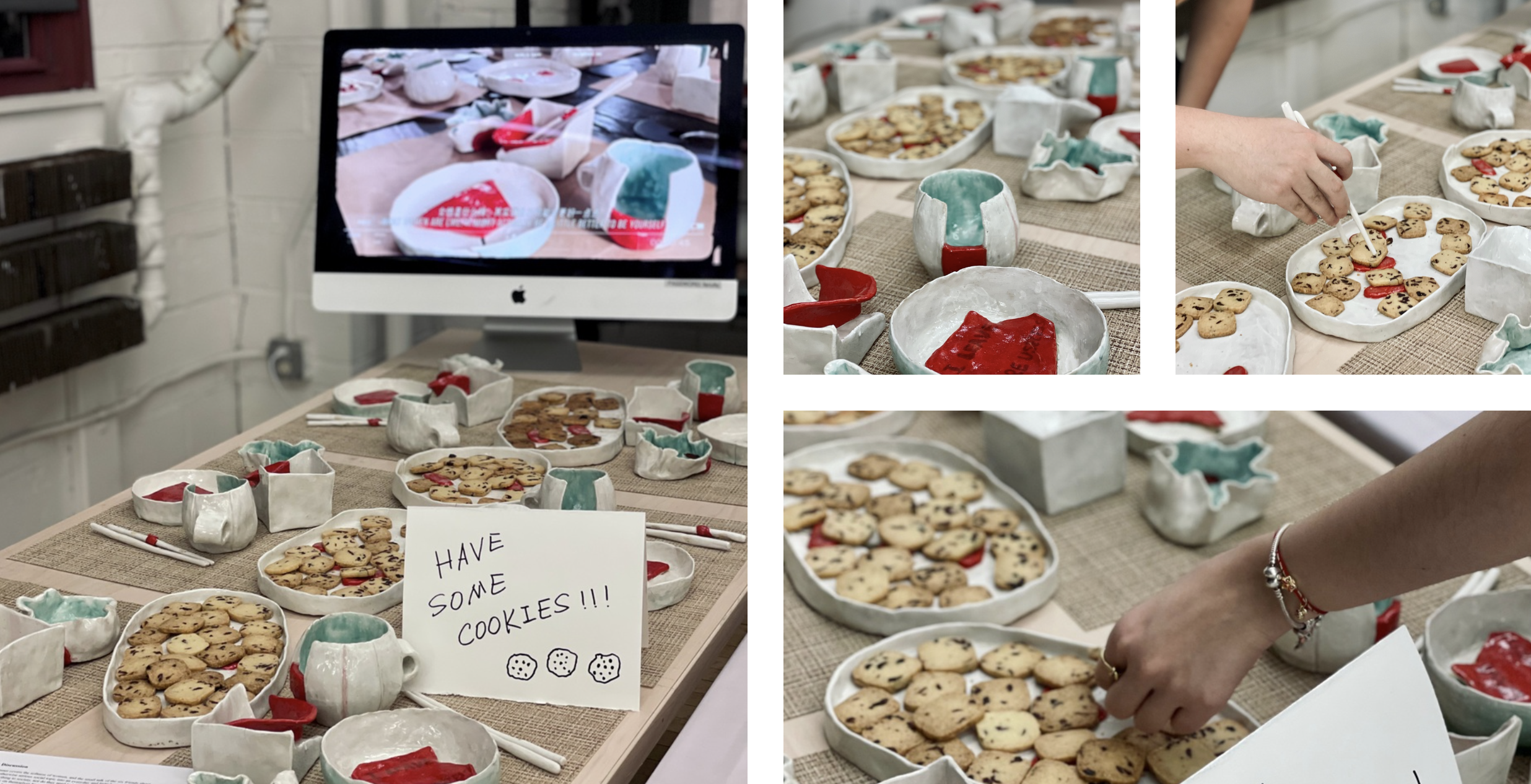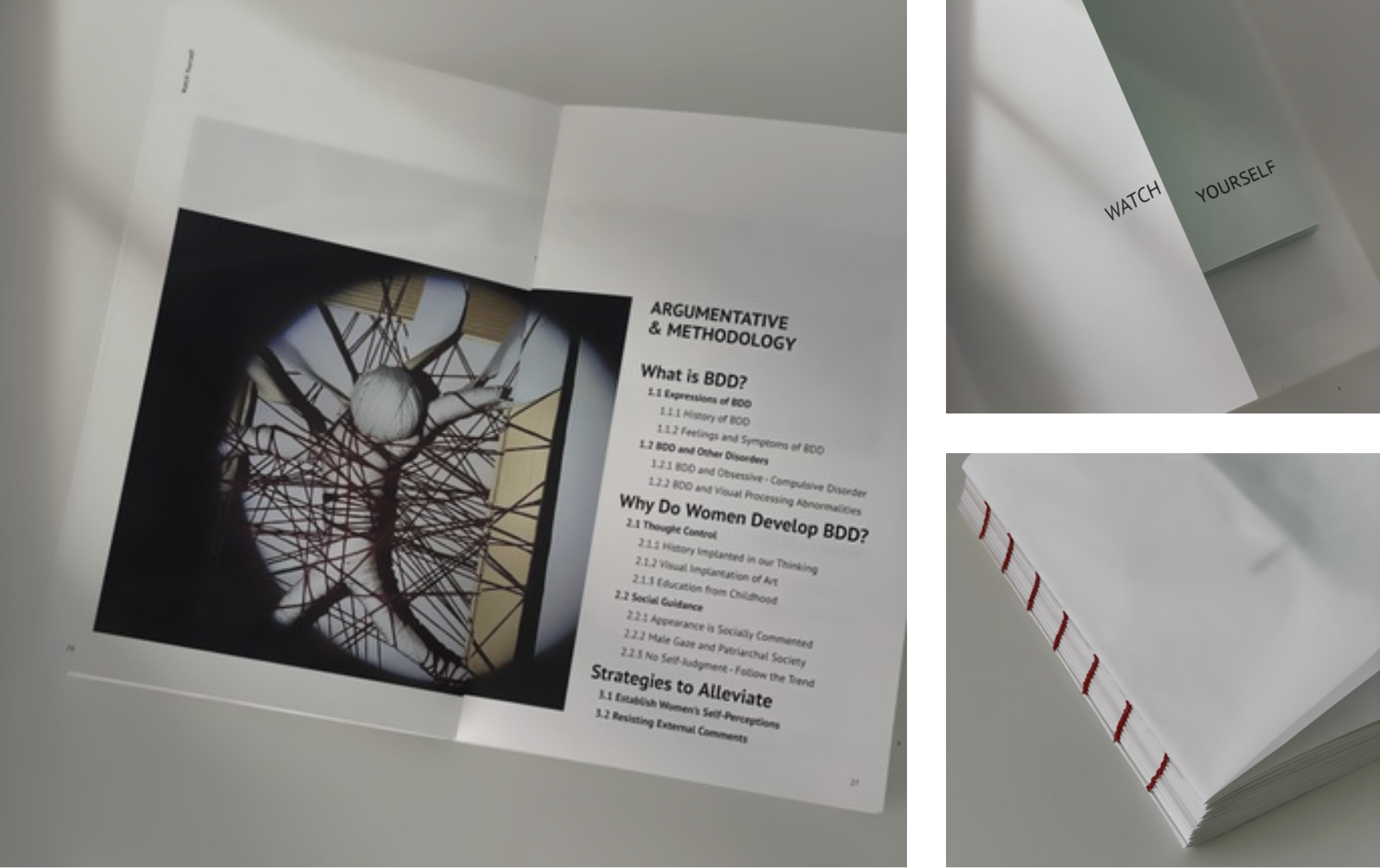Watch Yourself: Communication Design And Body Dysmorphic Disorder
Yiwen Chen
Contemporary women face unrealistic beauty standards and are often criticized for their appearance. In China, women are taught to focus on their looks from a young age and must be hyper-conscious of their behavior to avoid creating a negative impression. Appearance anxiety affects most women to some degree and can lead to body dysmorphic disorder. This research examines the impact of appearance anxiety on individuals’ perception, including extreme cases such as body dysmorphic disorder. Through design, this project aims to deconstruct and highlight the distorted aesthetic schemas perpetuated by media culture, ultimately helping Chinese women develop a healthier self-perception.

Looks are Not All
The ceramic piece “Looks are Not All” is my way of expressing this idea. Fragile pottery was chosen to represent women because some of the ceramics’ symbolism can represent women’s brittle but hardened strength. In the ancient Chinese mythology of Nuwa’s (female) creation, Nuwa used clay to create and build human society. The clay portrayed in the story is the embryo used to make pottery. The world has always used the white and pure qualities of pottery to refer to women who are elegant in their demeanor and value chastity. And I use less-than-flawless pottery to counter this idea.
Ceramic detail display
When everyone is creating and shaping excellent ceramics, what I want to shape are some mutilations. Please don’t be overly concerned with your looks and then forcibly try to beautify her to the extreme. You are imperfect but powerful, so don’t only care about your flaws (appearance). Everyone has something to live for. The pottery’s red parts are the whole vessel’s defective parts. But without these parts, the pottery would be useless. I chose red to highlight the faulty features because red is a very punchy color. And I think that red is particularly representative of female power. Red lipstick, red roses, red nail polish, and Christian Louboutin’s red-soled heels all represent femininity. And red is also the color of blood and the heart, which can link to plastic surgery and makeup. So I think the red color is the aptest choice. By pairing the red pigment with the green ceramic glaze, I also wanted to use a contrasting color to enhance the impact and visual tension.
Dinner for six
The ceramics eventually turned into a simple dinner for six. The warm dinner covers women’s softness, and the six friends’ small talk about their looks turns this otherwise serious social topic into a day and light-hearted one.Dinner Party
Women don’t need to prove anything to society, nor do they need to be iron women. Nor should they put the shackles of responsibility on themselves because of feminism. Instead, it reflects that women may not have much power, but it is valuable. To be a person of value, appearance does not represent a person’s whole.
Exhibition Show
The final group of ceramics is placed in order on an exhibition table that can accommodate a gathering of six people, and we can view the beauty of its mutilated but still valuable nature. Walking into the table, you can faintly hear the sounds of some conversations. They were discussing looks, women, and BDD. Each had different opinions, but the women were confident and thoughtful.
Watch Yourself
Contemporary women are criticized and scrutinized based on unrealistic beauty standards. In China, as in many countries, women are taught from an early age to be careful of what they say or do and to focus on their looks. They must be hyper-conscious of their appearance and behavior to prevent creating a wrong impression on others. Clinical studies have shown that most women suffer from appearance anxiety to a greater or lesser extent. And when this reaches an extreme, we call it body dysmorphic disorder.